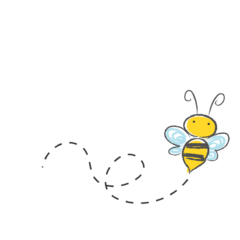As an Amazon Associate I earn from qualifying purchases.

The Ideal vs. Reality: Overcoming Meditation Challenges
When the thought of Meditation crosses my mind, it always feels like something I should embrace. The vision of sitting in a simple cross-legged or lotus position, eyes closed, breath focused, mind serene, and the escape from the ceaseless stream of thoughts that usually flood my consciousness is undeniably appealing.
However, reality often contrasts this idealized image. Sitting on the floor with legs crossed, trying to maintain a straight spine, can be uncomfortable. The solution? A Meditation Cushion that promises to alleviate this physical discomfort. Problem solved, right? Well, not quite. Even with enhanced physical comfort, my restless mind continues to elude concentration. Frustration might tempt me to give up, but deep down, I know that meditation holds benefits worth pursuing. And that it’s about discovering a more accessible approach that fosters a sustainable practice.
I recall when I first started yoga. The initial discomfort left me questioning its suitability for anyone. However, as I persisted at a pace that worked for me, my body gradually opened, and I began to thoroughly enjoy the experience. I discovered comfort in the harmonious synchronization of bodily motions with the coordination of breath. During those 90 minutes, my mind could transcend its constant chatter.
Meditation can follow a similar trajectory but must be tailored to our individual needs, never feeling like and insurmountable task. It’s supposed to help us feel better. Even a mere minute of meditation is superior to nothing when you’re starting. As you continue, it starts to work its magic, and naturally, you’ll find yourself meditating for more extended periods because it feels good. This transformation can only happen after some time; establishing a new habit can take anywhere from 66 to 254 days, so patience and consistency are your allies. There are no lofty goals—just a simple commitment to meditate daily in one form or another.
Before delving into specific techniques, let’s remind ourselves of the benefits of regular meditation practice.
The Benefits of a Regular Meditation Practice
1. Stress Reduction
2. Improved Focus and Concentration
3. Enhanced Emotional Well-being
4. Better Sleep
5. Stress-Related Health Benefits
6. Increased Self-Awareness
7. Boosted Creativity
8. Greater Resilience
Exploring Meditation Techniques: Finding Your Fit
So, let’s explore some meditation options. Choose one or two practices you can incorporate into your daily routine, adapting them to ensure your success. Begin with a small commitment, meditating once daily, and only extend the duration if it feels organic to you. Avoid forcing yourself because you think you “should” be capable of it.
Breath Awareness
Close your eyes or maintain a soft gaze.
Focus on your breath, inhaling and exhaling slowly and deeply.
Pay attention to the sensation of the breath entering and leaving your body.
Body Scan
Start from the top of your head and slowly scan down through your body.
Notice any areas of tension, discomfort, or relaxation.
Breathe into tense areas and release tension as you exhale.
Mindful Listening
Tune into the sounds around you without judgment.
Pay attention to the details of each sound, whether it’s the hum of the computer, footsteps, or distant conversations.
Mantra Meditation
Choose a word or phrase that holds meaning for you.
Repeat it silently or quietly as you work or walk.
Let the mantra anchor your mind and keep you focused.
Gratitude Reflection
Take a moment to think about things you’re grateful for.
This can be done while working, sitting, or walking, and it helps shift your focus to positivity.
Walking Meditation
While walking, pay attention to each step.
Notice the lifting, moving, and placing of each foot.
Feel the ground beneath you with each step.
Desk Yoga
Incorporate gentle stretches and yoga poses into your workday.
Focus on your breath as you stretch and move, bringing awareness to your body.
Loving-Kindness Meditation
Send well wishes to yourself and others.
Repeat phrases like “May you/I be happy, may you/I be healthy, may you/I live with ease.”
Five Senses Check-In
Pause and identify something you can see, hear, touch, taste, and smell.
This grounds you in the present moment.
Micro-Mindfulness Breaks
Take short breaks throughout your day to check in with yourself.
Focus on your breath or a brief body scan to reset and recenter.
Visualization
Close your eyes and visualize a calming scene or a successful outcome for your work. Engage all your senses in this mental journey.
Chewing Meditation (for eating)
Pay attention to the flavors, textures, and sensations as you eat.
Slow down and savor each bite mindfully.
Standing Meditation
Stand with your feet shoulder-width apart.
Feel the connection between your feet and the ground.
Focus on your breath and maintain a relaxed posture.
Counting Breath
Inhale and exhale naturally, counting each breath cycle to a certain number (e.g., 10).
Start over if your mind wanders.
Affirmations
Use positive affirmations related to your work or life goals.
Repeat them silently or aloud to yourself for motivation and focus.
Cultivating Consistency for a Fulfilling Meditation Practice
A meditation practice can be integrated into various aspects of your daily routine. Choose meditation practices that resonate most with you and adapt them to your work or activity. Consistency and practice are vital to reaping the benefits of meditation in your everyday life.
Share Your Meditation Journey!
We believe that stories have the power to inspire and connect us. Do you have a personal experience or a story about how Meditation has impacted your life?
We’d love to hear your anecdotes, insights, and moments of growth.
By sharing your story, you’re helping others realize the potential of meditation. Your words could encourage someone to embark on this enriching journey. Your story matters, and it can make a difference! Click on Leave a comment and share you story.
